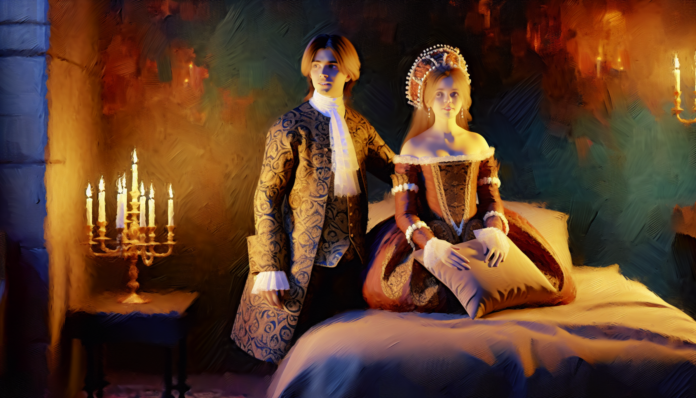Introduction
In a world where societal hierarchies ruled and love often took a backseat to duty, one scandal would capture the hearts and minds of a nation. The affair between Queen Caroline of Brunswick and her secret lover, Bartolommeo Pergami, unfolded in the early 19th century, shaking the very foundations of British aristocracy. As both a tale of forbidden love and a battle against societal norms, this scandal highlights the complexities of passion in a rigidly structured world.
Set against the backdrop of early 19th-century Britain, a time when monarchy and class distinctions defined social interactions, the affair starkly contrasted prevailing moral attitudes. In this era, marrying “down” was not just taboo; it was a direct affront to the established order.
The Scandal
The roots of Queen Caroline’s scandal can be traced back to 1795 when she was wed to the future King George IV—an arrangement marked by animosity rather than affection. After years of enduring her husband’s infidelities and cruelty, Caroline sought solace in the arms of Bartolommeo Pergami, an Italian valet. Their bond deepened amidst shared secrets and affections, leading to public speculation that finally erupted into a scandal.
Key events included:
-
The Elopement: The couple’s notorious attempts to elude the watchful eyes of the court became fodder for gossip rags. Reports circulated of their clandestine meetings in a lavish dressing room, described in detail by newspapers of the day.
-
The Trial: The affair reached a fever pitch in 1820 when King George IV sought to divorce his wife, alleging her adultery. The ensuing trial unveiled salacious details that eventually painted Caroline in a sympathetic light as a woman wronged, rather than the unrepentant sinner she was accused of being.
- Public Sympathy: While aristocrats clamored to maintain the status quo, a segment of the public embraced Caroline, viewing her as a defiant figure challenging the oppressive structures of her time. One observer noted, “Caroline embodies the essence of love lost to rank—an enduring symbol for the masses.”
Moral and Cultural Analysis
Society’s reaction to Caroline’s affair was polarized. The upper echelons of society condemned her actions, viewing them as a disgrace; however, her portrayal in the press began to shift public opinion—echoing the sentiment that she was a victim of her atrocious marriage.
-
Consequences: Caroline faced ostracism, and her reputation was tarnished, yet she gained a loyal following who empathized with her plight. Bartolommeo, meanwhile, was vilified, often recast as a mere opportunist rather than a genuine partner.
- Modern Parallels: Today, the scandal would likely be viewed through a different lens. Context matters, and modern audiences might find a compelling narrative of love challenging societal expectations relatable. In a contemporary context, the media’s fixation on personal relationships—think the likes of Meghan Markle and Prince Harry—highlights continued interest in romance transcending class divisions, even if the consequences remain substantial.
In a world that increasingly champions love over tradition, Queen Caroline’s story resonates with those who continue to challenge norms for the sake of their hearts. The dichotomy between her era and ours opens a dialogue about ever-evolving views on fidelity, class, and the meaning of true love.

